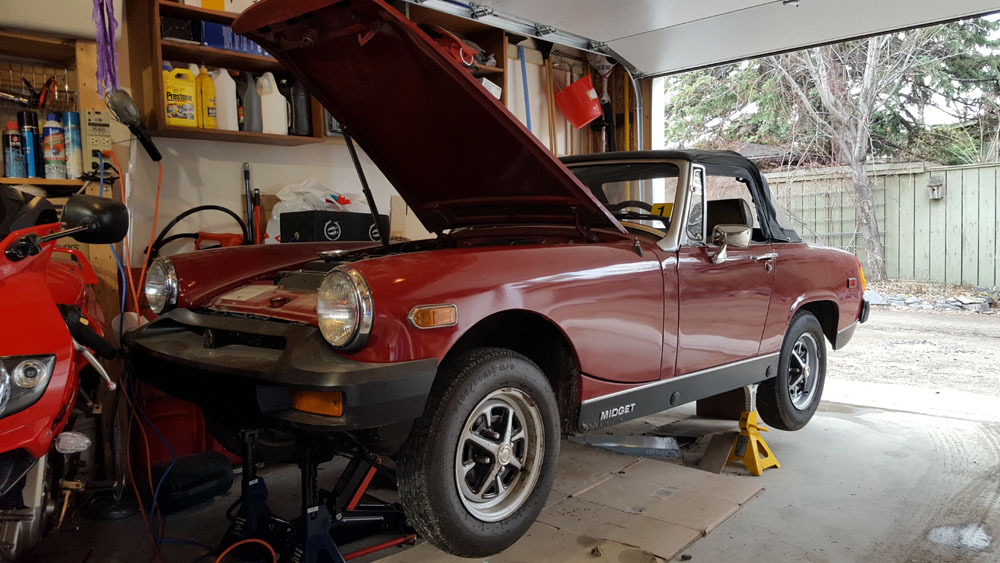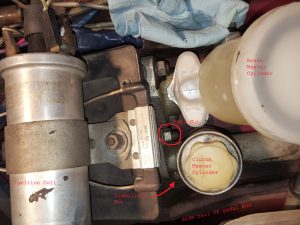31 Jul 2017
Posted by Dave under Dave's Thoughts,Mr. FixIt
Better Living through Hydraulics
With one day to spare before my weekend clutch repair on the Midget rolled over into a 5th month of work, I got the car on the road for it’s maiden voyage for 2017. Well, it was less of a maiden voyage than a fingers-crossed “hope this thing will stop” test of the braking system up and down the local side streets. The MG did stop when requested, the gears shifted without complaint and the handling was improved due to the rear suspension fixes. Overall, a successful repair effort despite the large number of weeks elapsed and the great number of hours of work.
A lots of effort just went into cleaning up decades worth of grime and making efforts to take care of the details. For example, every fastener that got re-used (many were replaced where possible) got cleaned up on the wire wheel and had the threads chased with tap or die. Some parts were given a fine sanding or polished depending on what was needed. Lot’s of the type of task that would never be done by a shop as just too time consuming. For the most part, no one who is unwilling to lie on the ground with their head under the rear bumper will ever see the pieces that got this kind of attention!
And the things that you have to learn the hard way – like the order of operations when reinstalling the clutch slave cylinder. It’s easier to bleed if the slave is left loose and as low as possible under the car – except for the small problem that the slave can’t be fitted into it’s housing with the hydraulic line attached. The result is that the line must by disconnected and then, while forcing the slave into place, the clutch pushrod compresses the slave piston and all the hydraulic fluid spurts out the line fitting. And, of course, the contents of the master cylinder dribble out of the line at the same time. What a mess. Then the bleeding process starts over.
Interestingly, the final step in bleeding the clutch is highly satisfying. After a couple of hours of struggling with the installation and bleeding of the clutch, there were still a couple of tiny bubbles trapped at the high point of the line which is translucent, so you can see what’s going on. The line curves up from the master to be able to “make the corner” down beside the battery into the space beside the transmission where the slave cylinder lives. Air bubbles at the high point are exceedingly reluctant to flow downhill in either direction making Midget clutch bleeding a source of huge frustration. It turns out that the recommended solution is to kick the living daylights out of the clutch pedal. 50 kicks, as fast as possible, is the prescription – I figured if 50 is good, 60 would be better. Sure enough, in the mid 40’s the pedal feel started to come back and by the time I got to 60 it felt just right and no bubbles were left in the line.
After that, it was a matter of getting the wheels back on and lowering the MG from the jack stands after nearly a year in the air and firing it up. Over the next few days, there are a few remaining tasks – the hood needs to be re-fit and a year’s worth of dust needs to be washed off and it’ll need a coat of wax. Then, it will be time for some long awaited top down cruising on the long weekend. See you in Bragg Creek!
Comments Off on Better Living through Hydraulics









































